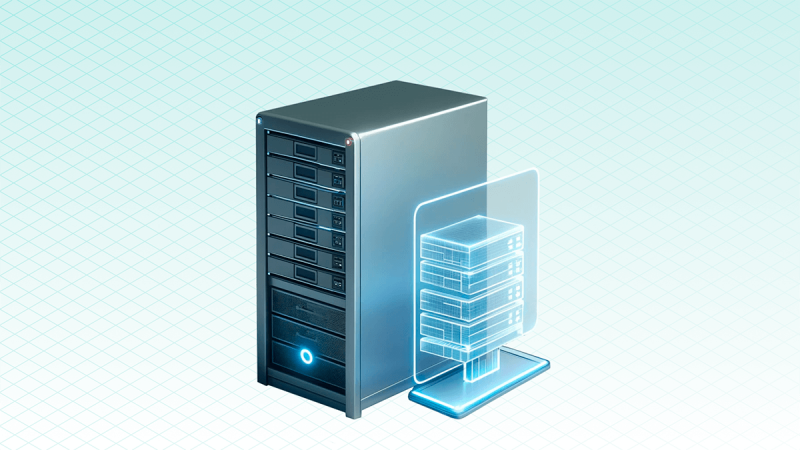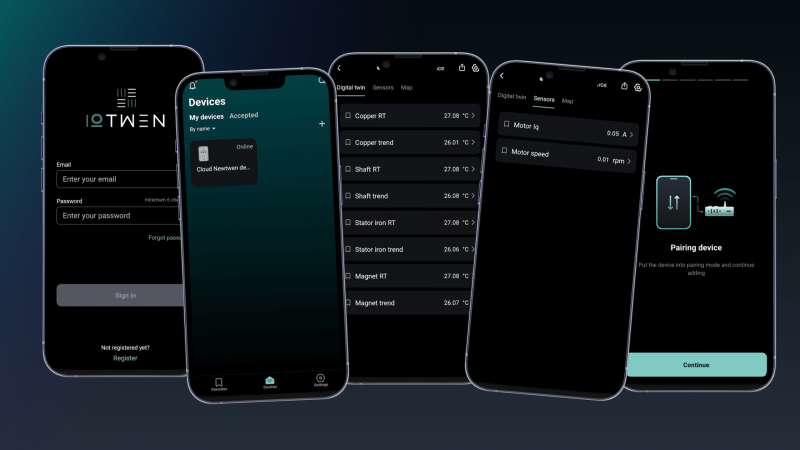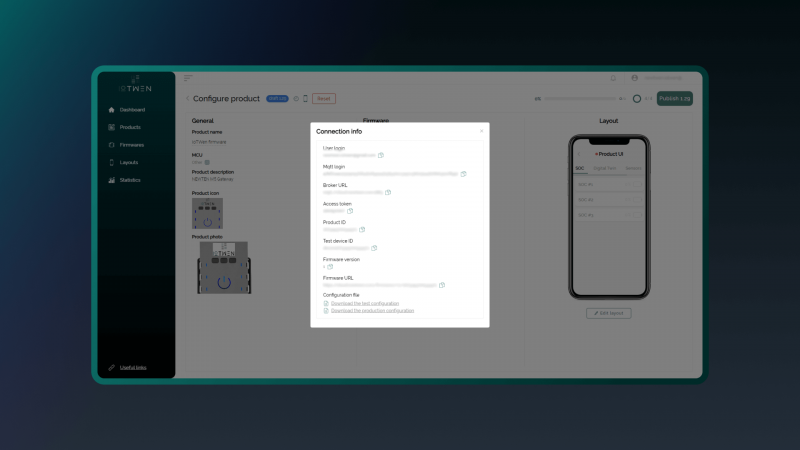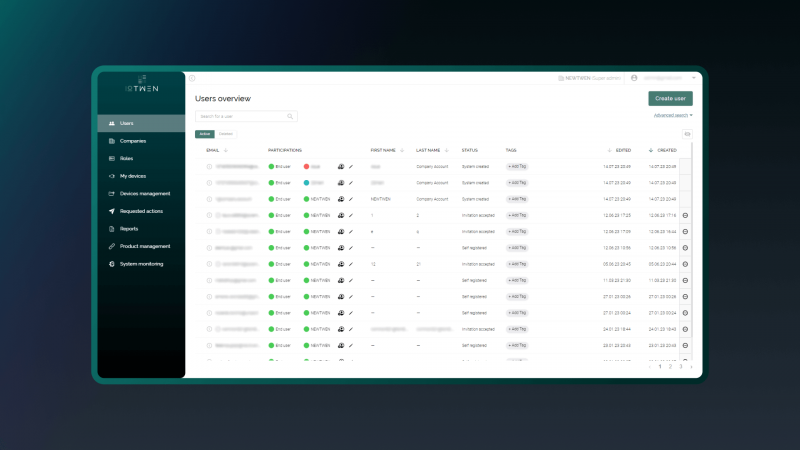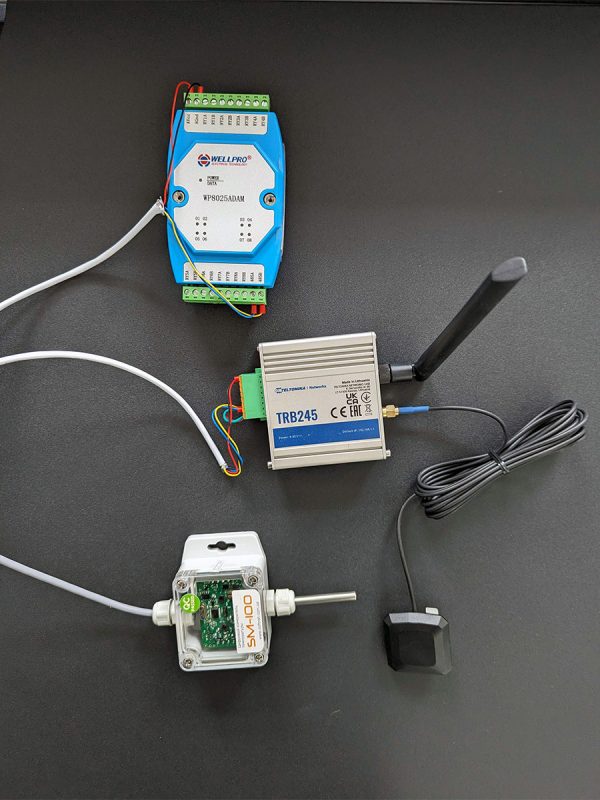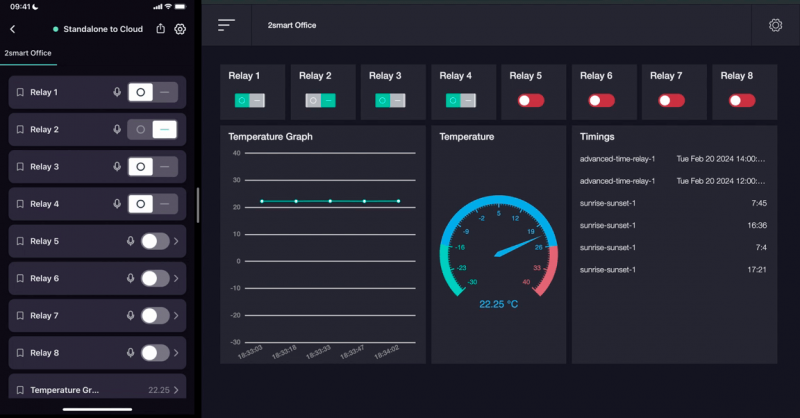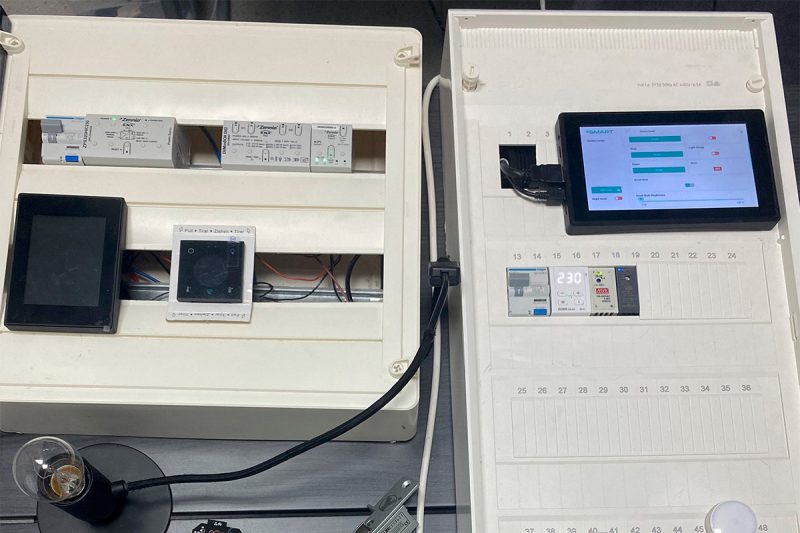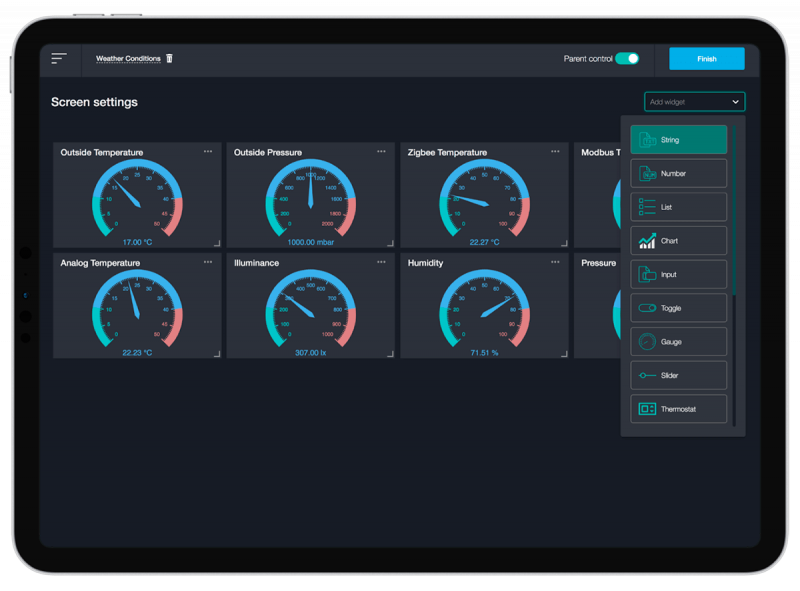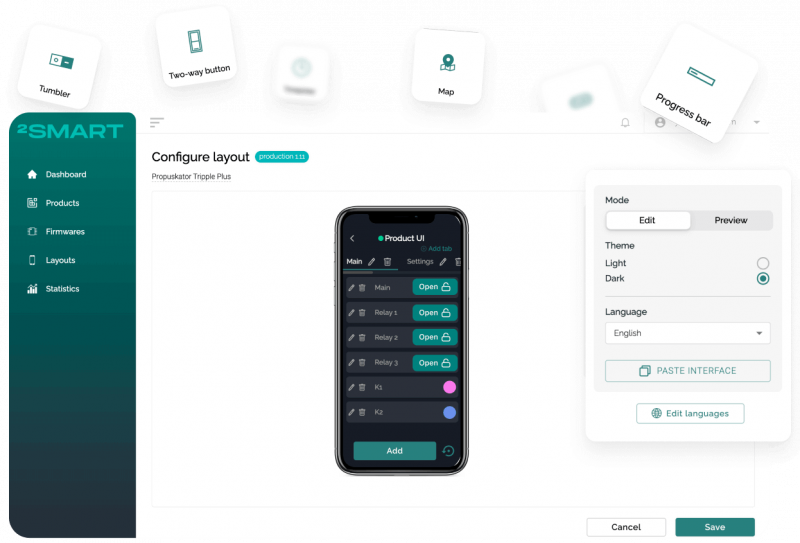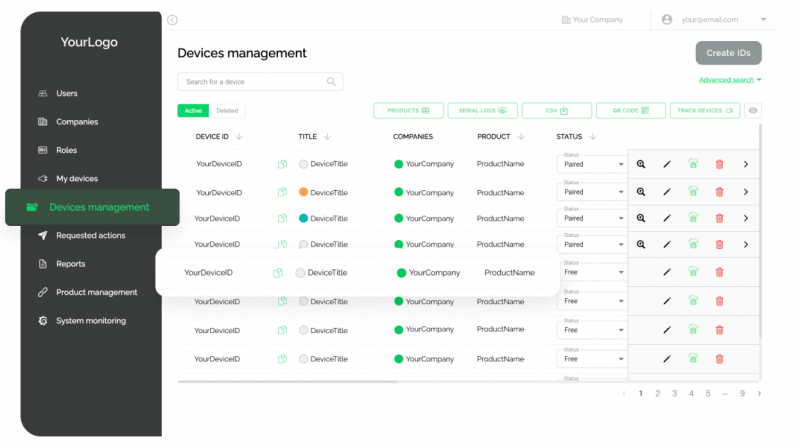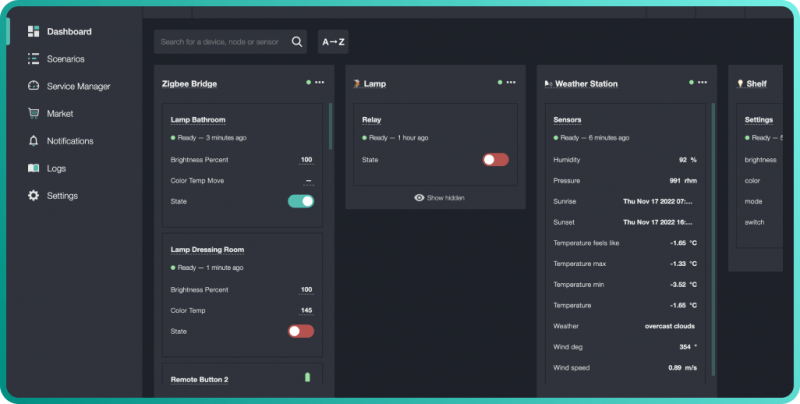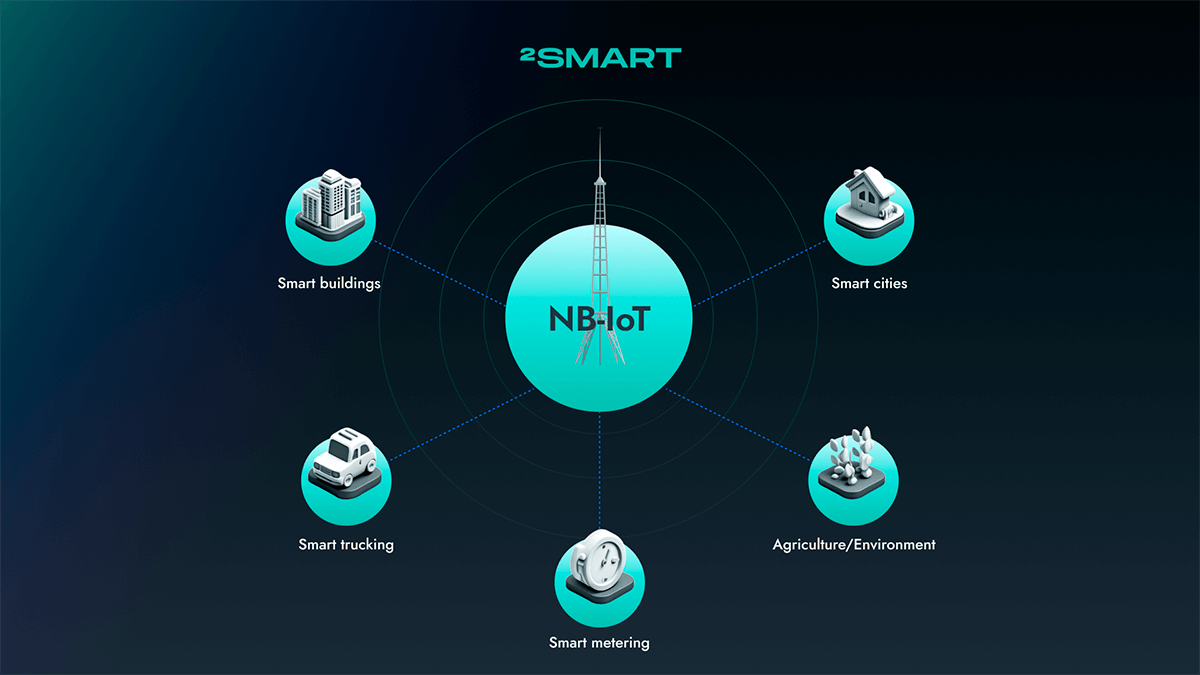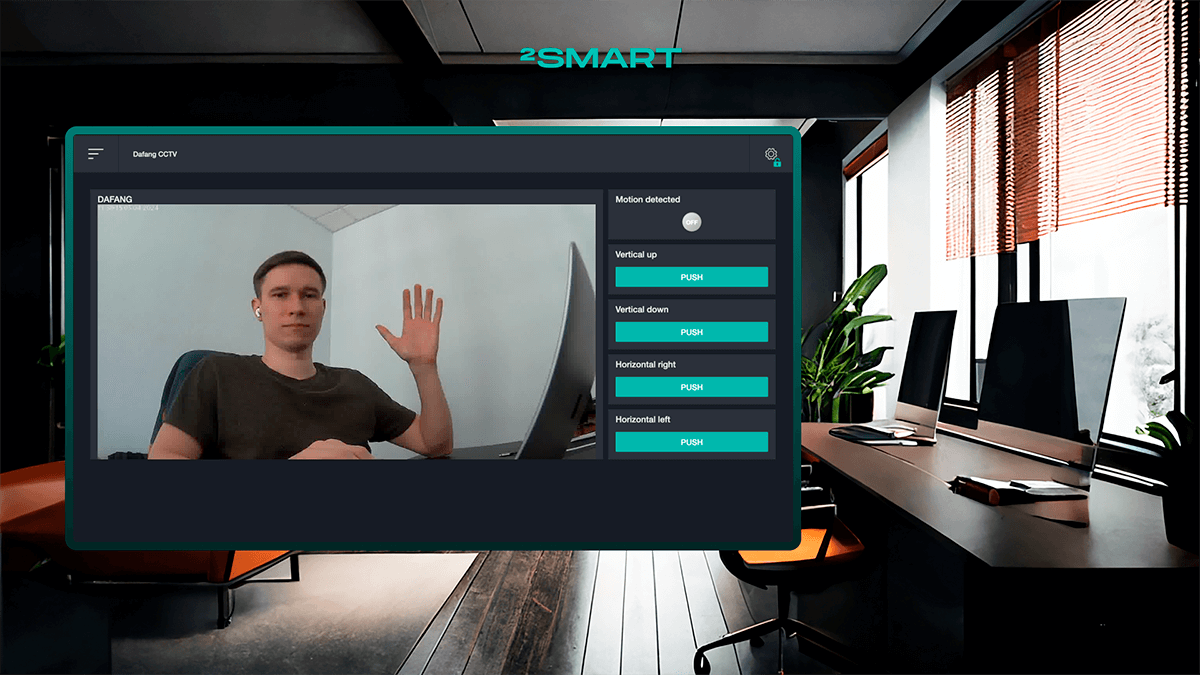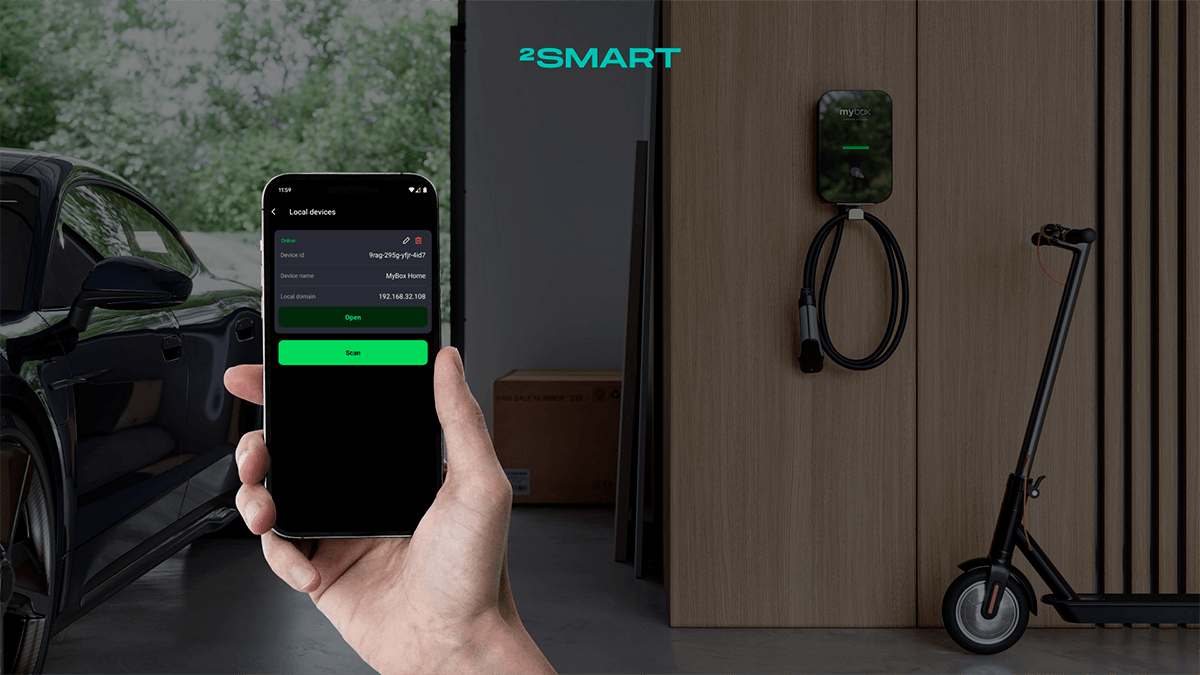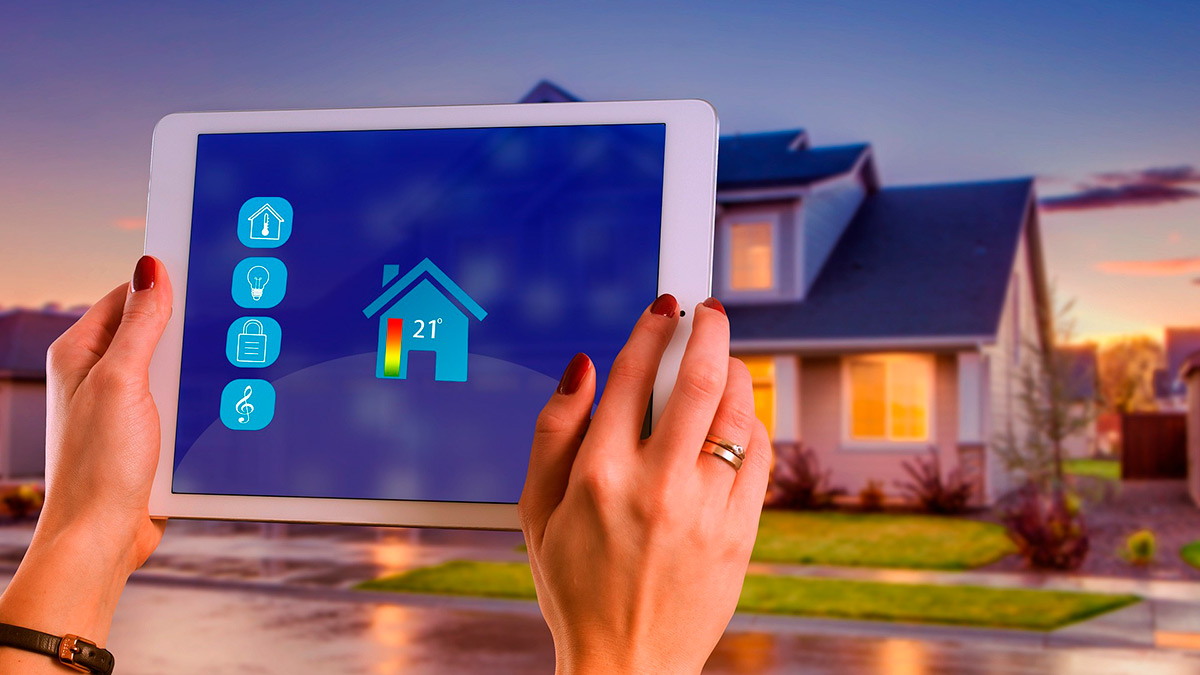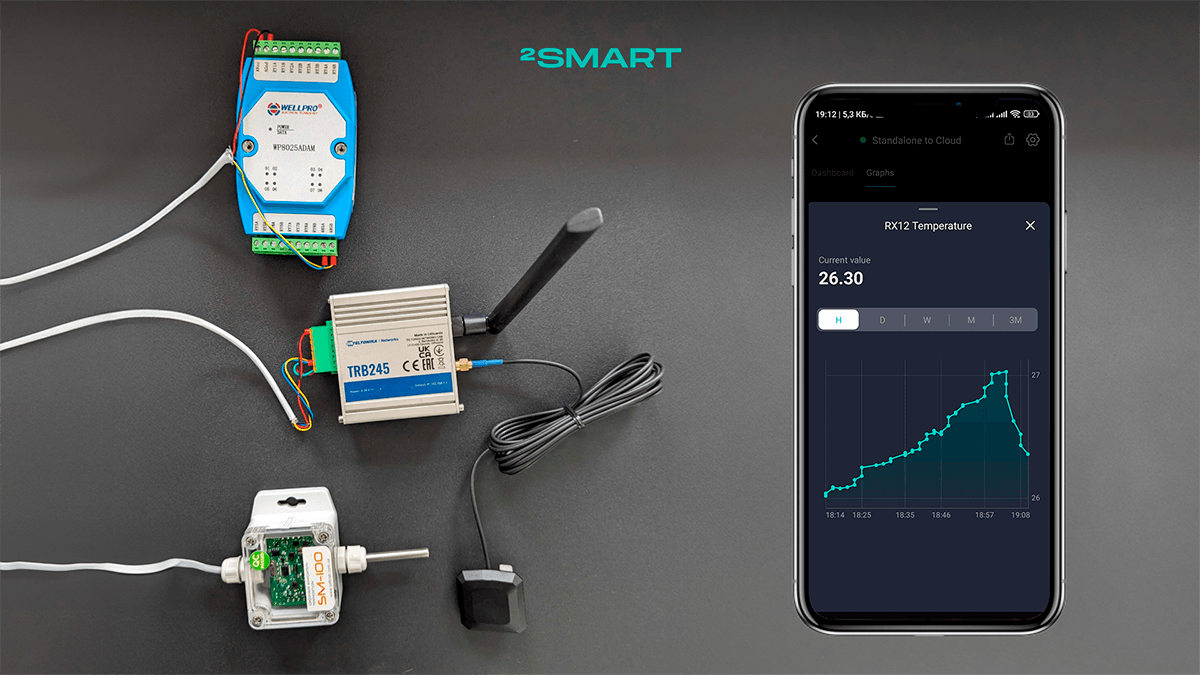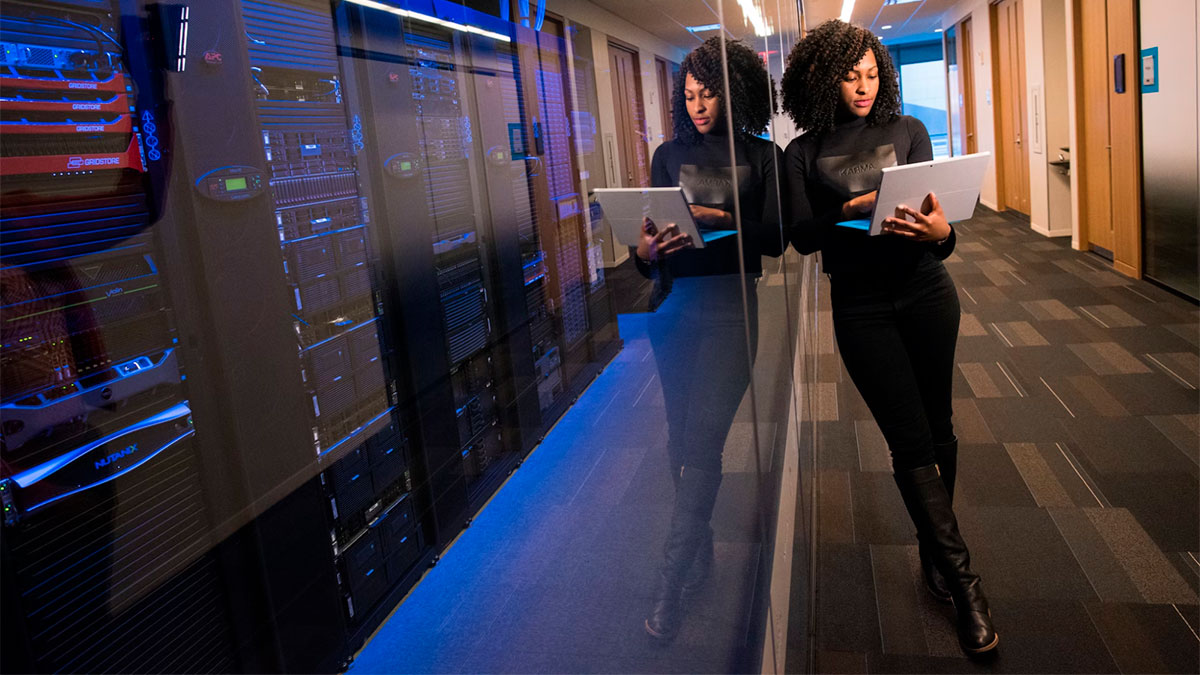Table of contents:
Digital twins are virtual models of physical objects, processes, or systems, created to simulate their real-world counterparts. These are invaluable tools for engineers and manufacturers, used for testing, debugging, and optimizing the performance of end devices. They are particularly beneficial in the production of large or very expensive items, where the cost of errors can be significant. In this article, we’ll explore the role of digital twins in the Internet of Things (IoT), their benefits and applications, and share practical examples from the 2Smart team.
Digital Twins in the Internet of Things
Every connected device essentially has a digital twin, which is its virtual counterpart or digital profile, consisting of data on the status of each sensor. Whether it’s complex equipment like electric vehicle charging stations with thousands of sensors, or a simple smart plug with just a few sensors, these devices have digital twins as long as they are connected to an IoT platform. This twin exists on the server, constantly updating with real-time data.
However, the concept of digital twins goes beyond just creating a virtual replica of a physical device. It’s about helping businesses detect physical issues more quickly, predict outcomes more accurately, and produce higher-quality products. This is achieved through continuous data analysis transmitted by the actual device.
By analyzing this data, manufacturers can gain precise insights into system performance and determine the necessary changes in both the product and the manufacturing process. This analysis includes creating a virtual model of the equipment, allowing for testing various scenarios. Unlike real-world equipment tests, these simulations carry no negative consequences and can even prevent real-world issues.
Let’s collaborate
We’re empower your business with our technology expertise
Advantages of Using Digital Twins
Here are the key benefits of digital twin technology:
Remote Monitoring
Digital twins enable remote monitoring and management of assets. This reduces the need for personnel to inspect potentially hazardous industrial equipment in person, enhancing safety and efficiency.
Predictive Maintenance
Digital twins facilitate predictive maintenance by identifying potential failures before they occur. This reduces downtime and maintenance costs, allowing for scheduled repairs based on real-time data and predictive analytics.
Enhanced Efficiency
By providing a comprehensive view of operations, digital twins help optimize processes, improve resource utilization, and streamline workflows. This leads to significant cost savings and increased productivity.
Reduced Production Time
Digital replicas allow for faster production of products and assets before their physical creation. Manufacturers can simulate scenarios to see how products respond to failures, making necessary adjustments before production begins.
Increased Innovation
The ability to model various scenarios and outcomes supports better decision-making and innovation. Companies can experiment with new designs, strategies, and processes in a safe virtual environment before implementing them in the real world.
Data-Driven Decision Making
Continuous data collection and analysis from IoT devices powering digital twins provide insights into performance, user behavior, and environmental conditions. This data-driven approach enables more informed and strategic decisions.
Industries Utilizing Digital Twin Technology
Today, many industries are increasingly adopting digital twins to create virtual representations of their real-world systems. Here are some key examples:
Manufacturing and Industrial IoT (IIoT)
In manufacturing, digital twins are used to monitor and optimize equipment, predict failures, and improve production processes. By modeling production lines and machinery, manufacturers can anticipate bottlenecks, reduce downtime, and enhance productivity.
Smart Cities
Digital twins play a crucial role in managing urban infrastructure. They enable real-time monitoring and control of utilities, transportation systems, and public services. By analyzing data from IoT sensors throughout the city, authorities can better allocate resources, reduce energy consumption, and improve residents’ quality of life.
Healthcare
In healthcare, digital twins of medical devices and even human organs are created to personalize patient treatments and improve medical outcomes. For instance, a digital twin of a patient’s heart can help doctors predict the effects of various treatments and adjust interventions accordingly.
Automotive Industry
Digital twins are employed in the automotive industry for designing, testing, and maintaining vehicles. By creating a digital twin of a car, manufacturers can monitor its performance, predict maintenance needs, and enhance safety in real time through continuous data analysis.
Agriculture
Digital twins are becoming essential tools in agriculture for optimizing processes, increasing yields, and reducing costs. This technology allows farmers to create virtual models of their farms, helping them monitor and predict the condition of crops, soil, and equipment in real time.
Let’s collaborate
We’re empower your business with our technology expertise
Connecting Old Wired Devices to the Cloud Using Digital Twins.
Another application of digital twin technology is connecting old wired devices to the cloud using IoT adapters or gateways. These devices typically operate on protocols like Modbus, I2C, analog/digital IO, etc. By employing IoT adapters or gateways, businesses can create a digital twin in the cloud, breathing new life into outdated technologies. This approach offers a cost-effective way for business owners to upgrade their equipment without physically replacing it, integrating seamlessly into existing IoT gateway infrastructure.
Real Examples of Digital Twin Technology Usage
In the practice of the 2Smart team, there are several cases that fully demonstrate the use of this technology in practice.
Digital Twin of a Controller for Solar Battery Management
Italian company Newtwen approached us with a request for infrastructure to connect digital twins. Specifically, they had developed a controller for managing solar batteries based on the ESP32 microcontroller. To further develop this device, the manufacturer needed a platform for testing and monitoring.
The 2Smart team provided the necessary software, including three key components:
- Mobile application for end users designed for interacting with the digital twin and fine-tuning its settings.
- Web application for device developers intended for connecting digital twins, configuring interfaces for the mobile application, and maintaining them.
- Enterprise management platform designed for business users, simplifying internal management for their clients and partners.
Additionally, we assisted in creating compatible firmware for real devices, providing Newtwen specialists with our SDK and necessary consultations. As a result, within four weeks, the manufacturer received a turnkey infrastructure and can create digital replicas of any devices, not just solar panel controllers.
Connecting Modbus Devices to the Cloud
Previously, we mentioned the option of connecting old wired devices to the cloud using digital twins. An example of this approach is our successful experiment with wired devices (an eight-channel relay and a temperature sensor) operating on the Modbus protocol. We utilized the Teltonika TRB245 gateway, to which we connected the Modbus bus and which provides interaction with these wired devices via the MQTT protocol.
Then, we deployed the open-source monitoring and automation platform, 2Smart Standalone, on a cloud server and connected the Modbus bus to it using an MQTT broker. This allowed us to obtain digital twins of the wired relay and temperature sensor. Their state corresponds to the current state of the real devices, which can be monitored via the web interface of the automation platform and the cloud mobile application.
Using the monitoring and automation platform, we were also able to control the state of the relay switches and utilize Modbus devices in automation scenarios.
Of course, this experiment was only necessary to prove the concept of creating digital twins of Modbus devices using the Teltonika gateway available on the market. Therefore, we used such a simple set as a relay and a temperature sensor. Building on this experience, we can now connect much more complex sets of Modbus equipment to the cloud.
Digital Twin of a Greenhouse
Another notable example of creating digital twins from the 2Smart team’s practice is a smart greenhouse connected to the 2Smart Standalone platform. Here, not only Modbus devices are used but also devices connected via KNX and Zigbee protocols. Several dozen sensors, lighting, and irrigation devices are connected to a computer with the automation platform deployed.
To control the greenhouse automation in standalone mode, a touchscreen connected to a mini-computer is used. The same purpose is served by the 2Smart Standalone mobile application, which operates in the same local network as the automation platform.
The client, for whom we deployed the intelligent greenhouse system, also wanted the ability to control it remotely. For this purpose, we linked their smart greenhouse to the 2Smart Cloud IoT platform account, allowing the client to manage the automated greenhouse via smartphone and monitor plant growth even from overseas business trips.
In this example, digital twins are used to automate a real greenhouse, significantly reducing manual labor and greatly increasing crop yield.
There are several parameters that need to be precisely managed to achieve high yields:
- air temperature and humidity,
- carbon dioxide level in the air,
- soil temperature and humidity,
- light level and duration.
During the greenhouse construction, the client provided for three sections where different crops are grown. Each sector maintains its own climate. Thus, information about the above parameters in different greenhouse sectors is collected by sensors and processed by home greenhouse automation scenarios. Digital replicas of the greenhouse serve as an intermediary here.
To maintain these parameters within specified limits without manual labor, we installed the following controlled devices, the digital twins of which were also created within the automation platform:
- heating/cooling system,
- ventilation system,
- irrigation system,
- fertilizer delivery system,
- lighting system.
The concept of digital twins allowed the client of this system to achieve accelerated plant growth, save energy and resources on cultivation, as well as reduce the amount of manual labor and time required to obtain a harvest.
Get Infrastructure for Creating Digital Twins from 2Smart
If you’re looking for an infrastructure provider to create digital replicas of your equipment, 2Smart is ready to offer you the necessary solutions. Depending on your needs, you can obtain from us a local monitoring and automation platform, cloud solutions for device administration, as well as a white-label mobile application for users and administrators.
2Smart Cloud
The cloud-based IoT platform from 2Smart is designed for device manufacturers planning to sell their products to end-users. It enables the analysis of device data “in the field” on real users, allowing for the development of business strategies or the implementation of optimizations and delivery via OTA to users.
The platform supports the connection of devices based on any microcontroller with internet access. However, when using ESP32, you can save effort on firmware development for the prototype thanks to ESPHome support. End-users can control your devices using the 2Smart Cloud mobile application, and you can configure the device control interface in just a few minutes thanks to the no-code builder.
In the B2B version of the platform, there are features such as device management, historical data processing, firmware versioning, and white-label capability. By connecting to the Business Platform, you also gain more flexible options in the developer dashboard — for example, creating different layouts of the mobile application for users with different roles in the system.
2Smart Standalone
The open-source monitoring and automation platform from 2Smart is suitable for businesses needing to upgrade existing infrastructure (manufacturing, greenhouses, warehouses, etc.) and for those who want to conduct device testing in “garage conditions” (for example, startups not requiring cloud infrastructure).
This platform features functionality for collecting historical data and additional tools for creating telemetry monitoring dashboards and other data.
Devices connected to 2Smart Standalone can be additionally linked to 2Smart Cloud for remote control capabilities. Conversely, you can connect cloud devices to 2Smart Standalone to make them compliant with configured automation scenarios.
Conclusion
In conclusion, the adoption of digital twin technology, as exemplified by the practical cases presented by the 2Smart team, showcases the transformative potential it holds across various industries. From optimizing manufacturing processes to revolutionizing urban infrastructure management and enhancing agricultural practices, digital twins offer unprecedented insights and efficiencies.
By harnessing advanced platforms like 2Smart Cloud and 2Smart Standalone, businesses can seamlessly integrate digital replicas of their equipment, enabling remote monitoring, predictive maintenance, and enhanced decision-making. Whether it’s connecting legacy devices to the cloud or creating smart environments for precision agriculture, the versatility and adaptability of digital twin solutions empower organizations to innovate and thrive in the ever-evolving landscape of the Internet of Things (IoT).
As technology continues to evolve and digital transformation becomes increasingly imperative, investing in digital twin infrastructure becomes not just a strategic advantage but a necessity for organizations looking to stay competitive and resilient in the digital age. With 2Smart’s comprehensive suite of solutions, businesses can unlock the full potential of digital twins to drive growth, efficiency, and sustainability across their operations.
In summary, the journey towards digital transformation begins with embracing the power of digital twins—a journey that 2Smart is committed to facilitating every step of the way.
Frequently Asked Questions
What exactly are digital twins, and how do they work?
Digital twins are virtual replicas of physical assets, processes, or systems that mimic their real-world behavior. They work by continuously collecting data from sensors embedded in the physical asset, which is then used to update and synchronize the digital twin in real-time.
How do digital twins contribute to remote monitoring and predictive maintenance?
Digital twins enable remote monitoring by providing real-time insights into the status and performance of physical assets from anywhere with an internet connection. They also facilitate predictive maintenance by analyzing historical data and predicting potential failures before they occur, thus reducing downtime and maintenance costs.
Can digital twins be applied to existing legacy equipment, and how?
Yes, digital twins can be applied to existing legacy equipment by integrating them with IoT devices and sensors that collect data about the equipment’s operation and condition. This data is then used to create and update the digital twin, providing visibility and insights into the performance of the legacy equipment.
Are there any security concerns associated with digital twins and IoT solutions?
Yes, security is a significant concern when implementing digital twins and IoT solutions. It’s essential to ensure that proper security measures are in place to protect sensitive data, prevent unauthorized access to devices and networks, and mitigate potential cyber threats.
What industries can benefit from adopting digital twin technology?
Virtually any industry can benefit from adopting digital twin technology, including manufacturing, healthcare, transportation, agriculture, energy, smart cities, and more. Any sector that relies on physical assets or processes can leverage digital twins to optimize operations and drive innovation.
How does 2Smart’s infrastructure support the creation and management of digital twins?
2Smart offers both cloud-based and standalone platforms that support the creation, management, and integration of digital twins. Their solutions provide robust features for data collection, analytics, remote monitoring, automation, and control, empowering businesses to leverage digital twins effectively.
Is there support available for the customization and scalability of 2Smart’s digital twin solutions?
Yes, 2Smart’s digital twin solutions are designed to be highly customizable and scalable to meet the unique needs and requirements of businesses across different industries. Whether you’re a small startup or a large enterprise, 2Smart offers flexible solutions that can grow and evolve with your business.
Don't forget to share this post!
Read Next
Let’s dive into your case
Share with us your business idea and expectations about the software or additional services.

